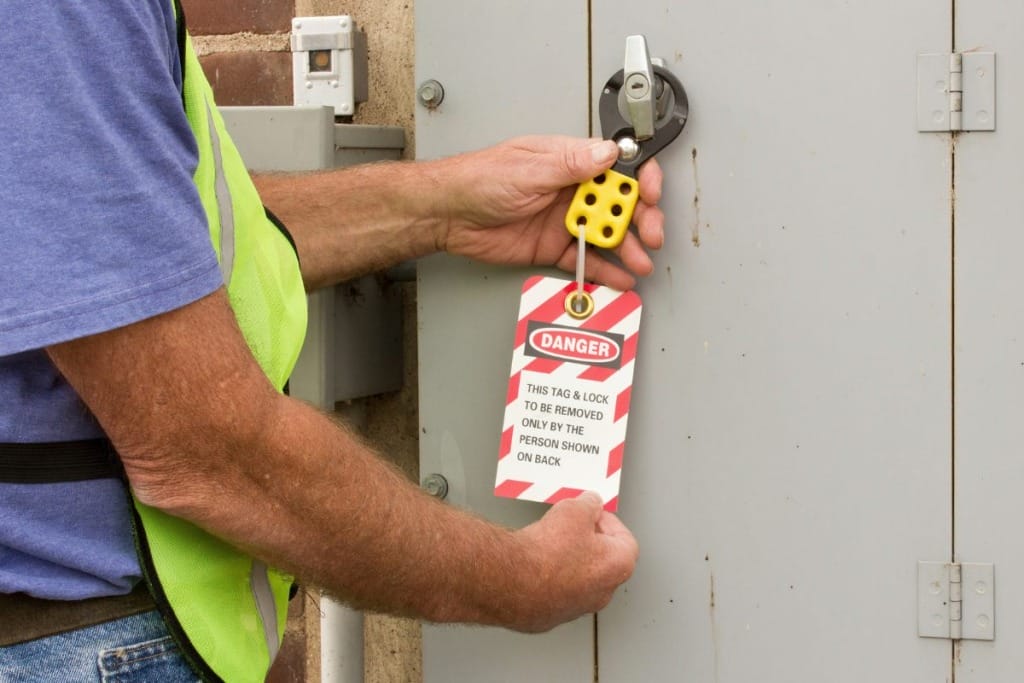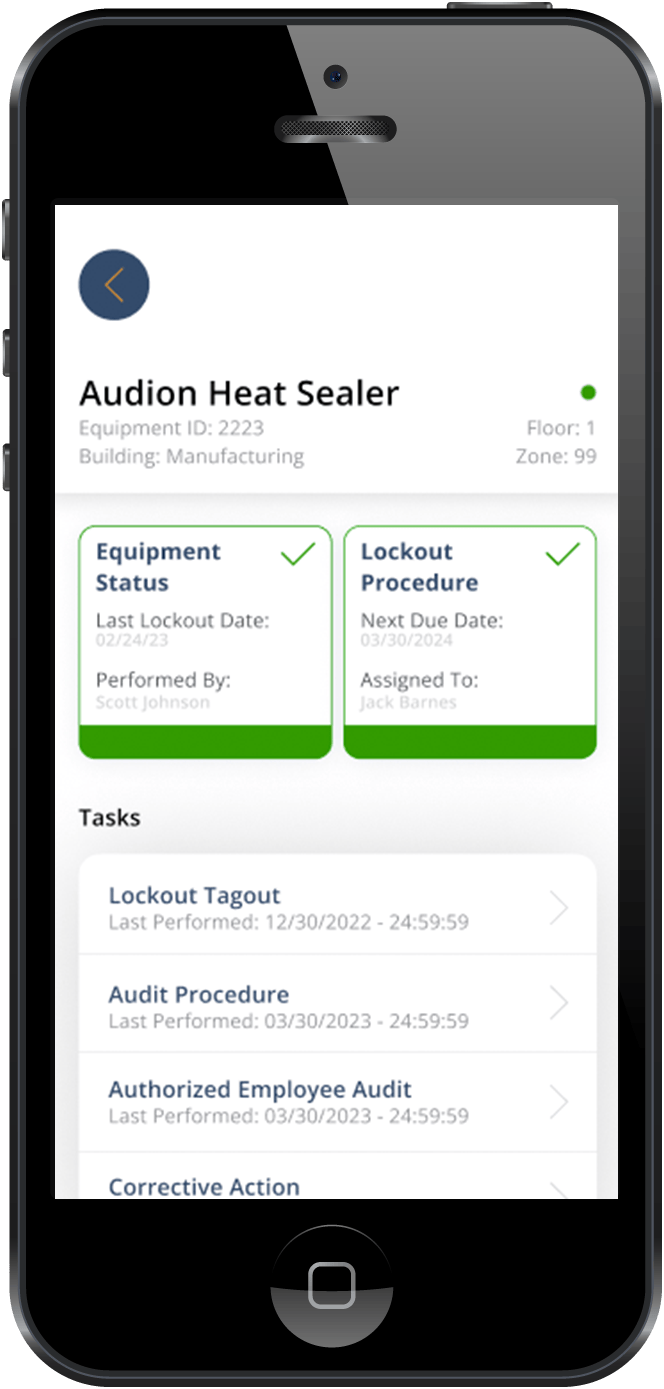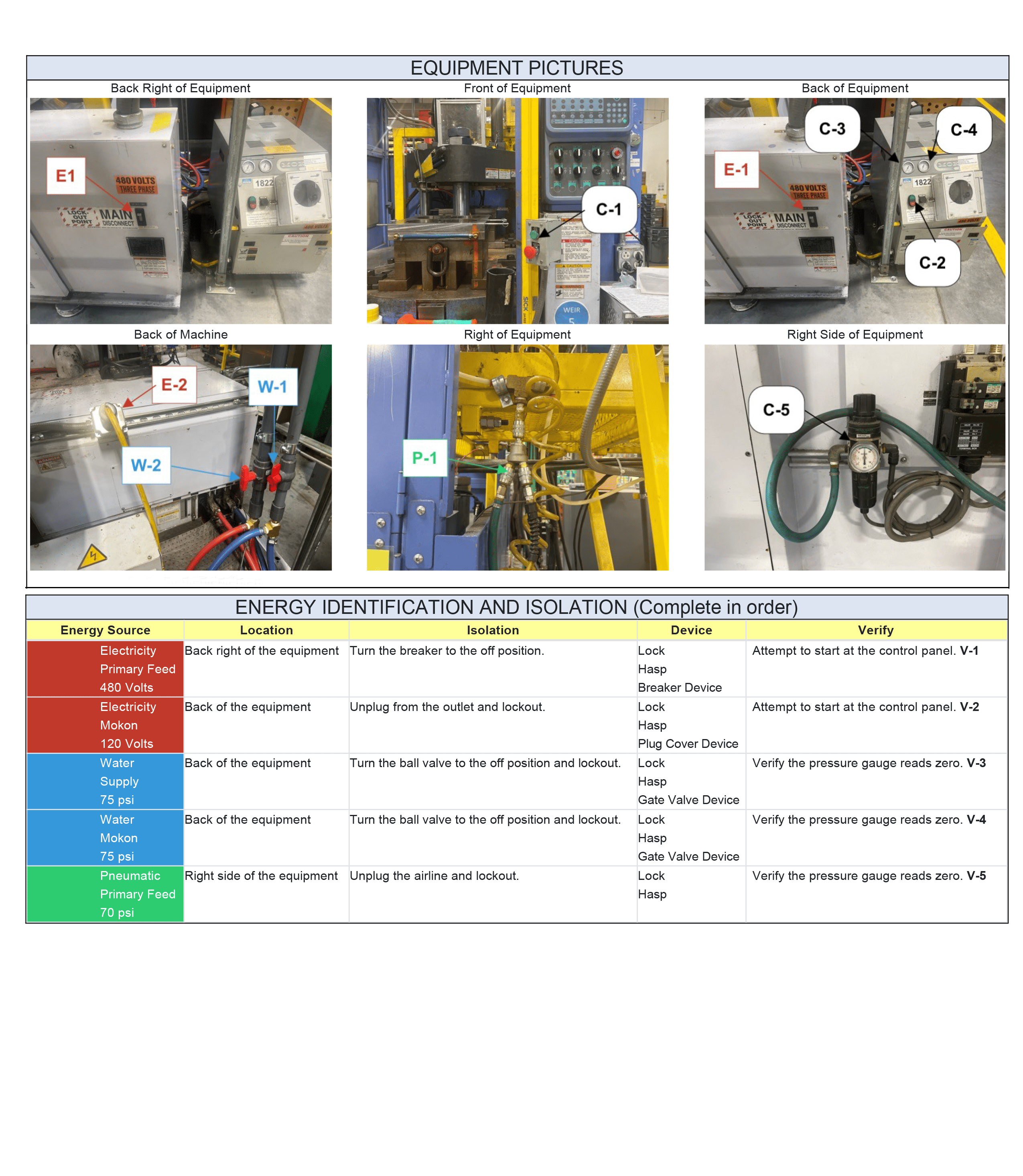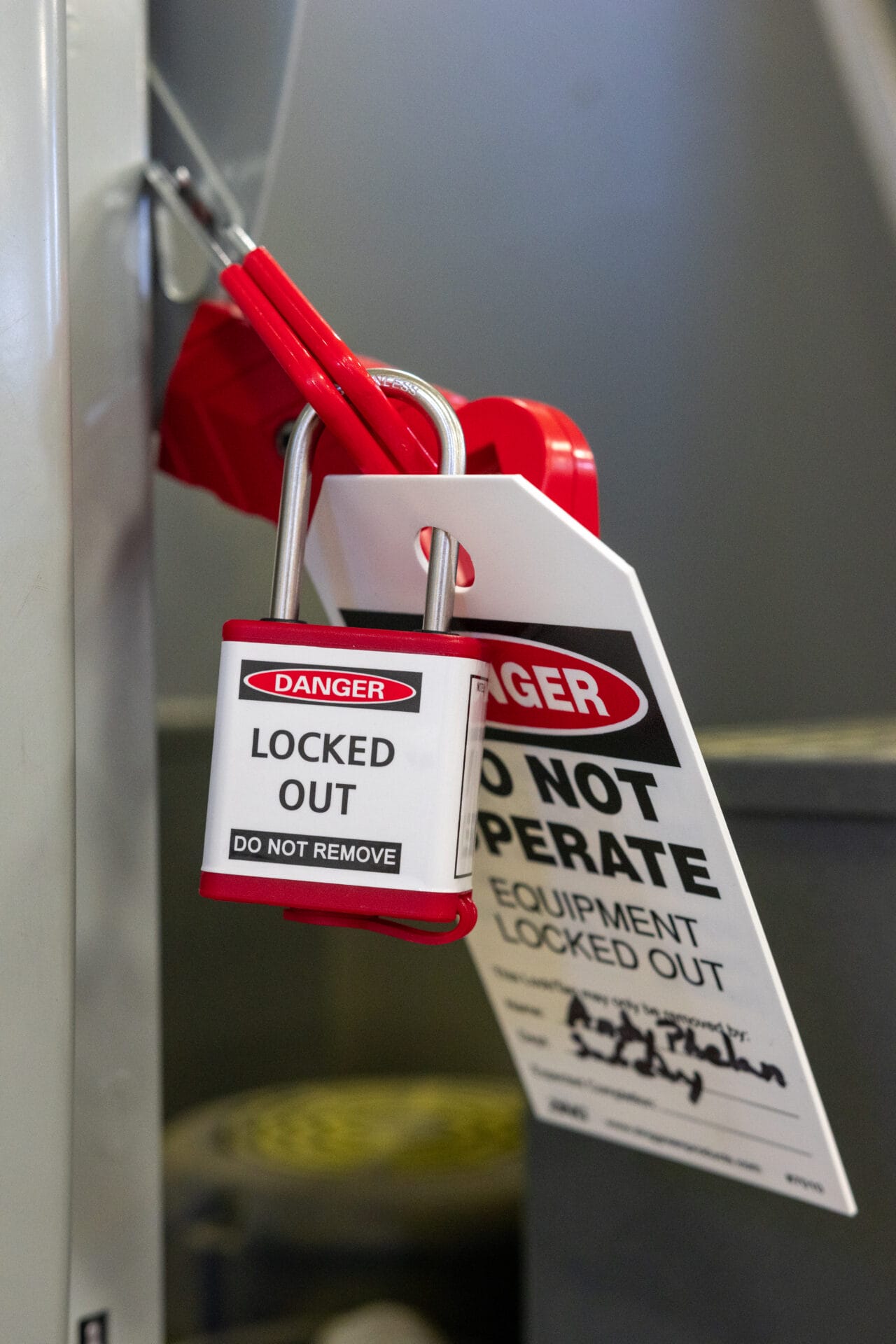A thorough guide to the purpose, requirements, and meaning behind colored LOTO tags for lockout tagout procedures.
When it comes to workplace safety, lockout tagout (LOTO) procedures play a critical role in preventing accidents and ensuring worker safety during maintenance and servicing activities. A key component of these procedures is the use of colored tags, which provide essential information and communicate the status of machinery and equipment.
This article explores the meaning of colored LOTO tags, the regulatory requirements for them, and their purpose. It serves to highlight their significance in maintaining a safe working environment.
The Purpose of Colored LOTO Tags
Colored LOTO tags serve multiple purposes in lockout tagout procedures. Here are 4 main reasons that LOTO tags are used in lockout tagout procedures and why a coloring system matters.
Identification:
- Colored LOTO tags help identify specific pieces of equipment that have been locked out. This ensures that workers can easily recognize which machinery is still energized and which equipment has been shut down and is safe to work on.
Communication:
- Lockout tagout tags detail who has been working on the machinery, what type of work is being conducted, and when it is expected to be completed. They also communicate other critical information such as the status of equipment. This helps prevent accidental energization and provides clear instructions to all employees working in the vicinity.
Compliance:
- Because LOTO tags provide so much critical information to lockout tagout procedures, using colored tags is often a regulatory requirement. LOTO tags help organizations comply with safety standards set by regulatory bodies such as OSHA (Occupational Safety and Health Administration) in the United States. In fact, OSHA mandates colored tag usage when performing procedures on any machinery or equipment that could produce or release hazardous energy.
Accountability:
- Tags often include details such as the name of the person who applied the lockout, the date, and the reason for the lockout. This ensures accountability and traceability in the lockout process.
OSHA Requirements for LOTO Tags
Part of the reason that there is a color code system for LOTO tags, is because it helps meet the requirements that have been established by governing bodies such as OSHA. In OSHA standard 29 CFR 1910.147, it outlines three main criteria for lockout tagout tags.
3 Main OSHA Requirements of LOTO Tags
- Durable
-
- According to OSHA standard 29 CFR 1910.147(c)(5)(ii), LOTO tags must be durable enough to withstand the environment in which they are used. This means that they should be constructed of materials that can endure exposure to moisture, chemicals, and other harsh conditions. The standard expands on this to say that tags should not deteriorate when used in corrosive environments (ex. areas where acid and alkali chemicals are handled and stored).
- Substantial
-
- As established in the standard, tagout devices and their attachments need to be substantial enough to prevent inadvertent or accidental removal. To further clarify this, the standard states that tagout device attachment means are required to be a non-reusable type, attachable by hand, self-locking, and non-releasable with a minimum unlocking strength of no less than 50 pounds. This means that attachments for tags should be at least equivalent in design and function to a piece of all-environment-tolerant nylon cable tie.
- Identifiable
-
- Colored LOTO tags help provide 2 key pieces of information: they identify the danger currently associated with the machinery (communicated through tag color) along with the identity(s) of personnel involved in the lockout tagout procedures. To accomplish this, OSHA requires that all lockout and tagout devices indicate the identity of the worker who applied the device(s). Additionally, tagout devices must use clear wording to warn against hazardous conditions. Common examples include: Do Not Start, Do Not Open, Do Not Close, Do Not Energize, Do Not Operate.
Along with these 3 main points, OSHA also mandates that a colored LOTO tag system be standardized and used exclusively for safety. This means that there needs to be consistency in the usage and application of each color of tag as well as limited LOTO tag use (only for actions related to lockout tagout procedures).
ANSI Requirements for LOTO Tags
Similar to OSHA, the American National Standards Institute (ANSI) also provides guidance for LOTO tags. These guidelines are outlined in ANSI Z535.5. Below are some of the key requirements outlined by ANSI Z35.5 for LOTO tags.
- Standardized colors are to be used with red meaning immediate danger, orange meaning a warning, and yellow meaning caution.
- Tags must have a standardized header and signal word(s) to indicate how hazardous the situation is.
- Standardized symbols/pictograms are to be used to help convey information for situations in which language barriers or low literacy levels are a concern.
- Tags should be designed with standardized text that briefly and clearly communicates the hazard present along with the actions needed to avoid the hazard.
Both the OSHA and ANSI requirements for LOTO tags are meant to help establish an orderly system for the messaging and usage of colored LOTO tags.
Generally Accepted Meanings of Colored LOTO Tags
Both OSHA and ANSI have recommended color code systems. Since neither color code is specifically required for compliance, we will cover both. This way, you can see 2 different approaches to a color code system for LOTO tags.
OSHA’s Recommended System
The OSHA recommended system for colored LOTO tags is as follows:
- Red Tags: Danger – Do Not Operate
- Yellow Tags: Caution – Out of Service
- Orange Tags: Warning – Information Only
- Fluorescent Orange/Orange-Red Tags: Biological Hazard – Beware
This system is similar to ANSI’s in that both recommend the usage of red, orange, and yellow tags for the same things. However, they are distinct in that OSHA’s includes biological hazards and ANSI’s includes colors for notice and safety tags.
ANSI’s Recommended System
The ANSI recommended system for colored LOTO tags is as follows:
- Red Tags: Danger – Do Not Operate
- Yellow Tags: Caution – Out of Service
- Orange Tags: Warning – Information Only
- Blue Tags: Notice – Info Not Related to A Hazard
- Green Tags: Safety Instructions
Each Color’s Meaning and Purpose
Red Tags: Danger – Do Not Operate:
Purpose: Red tags are used to indicate that the equipment is locked out and must not be operated. They signal that the machinery is undergoing maintenance or repair, and operating it could be hazardous.
Meaning: A red tag means “Danger” and is a direct instruction to all personnel to refrain from using the equipment until the tag is removed by the authorized person.
This is the most commonly used color for LOTO tags.
Yellow Tags: Caution – Out of Service:
Purpose: Yellow tags are typically used to indicate that the equipment is out of service but not necessarily locked out for maintenance. They might be used for equipment that is undergoing testing or is temporarily non-operational.
Meaning: A yellow tag means “Caution” and indicates that the equipment should not be used until further notice, but it does not signify the same immediate hazard as a red tag.
Orange Tags: Warning – Information Only:
Purpose: Orange tags are used to provide additional information or warnings about the equipment. They may include notes about specific hazards, special instructions, or the status of the lockout procedure.
Meaning: An orange tag means “Warning” and serves as an informational tool to convey important details that workers need to be aware of.
Fluorescent Orange/Orange-Red Tags: Biological Hazard – Beware:
Purpose: Fluorescent orange tags are used to warn viewers that machinery or equipment poses a biological hazard threat. They signal that any personnel nearby need to take proper cautionary measures in regards to the hazard.
Meaning: A fluorescent orange tag means “Biological Hazard” and serves as a warning that there is a bio hazard that workers need to be aware of.
Blue Tags: Notice – Info Not Related to A Hazard:
Purpose: Blue tags are often used to help convey information that is considered important but not hazard-related. For example, it might be used to detail property policies.
Meaning: A blue tag means “Notice” and highlights that there is additional information available.
Green Tags: Equipment Operational/Safety Instructions:
Purpose: Green tags can be used to provide safety-related instructions or procedures. They can also be used to indicate that equipment is operational and safe to use.
Meaning: A green tag means “Operational” and signals that the machinery can be used as intended without any restrictions or “Safety Instructions” and leads you to directions.
Organizations and Choosing a Colored LOTO Tag System
IMPORTANT NOTE: Organizations are free to designate their own coloring system for their lockout tagout programs and many do. However, the recommendations from OSHA and ANSI can be a good starting point.
The freedom to design a unique color coding system allows companies to tailor their program to fit their company’s needs. Though, companies should be careful not to design a color-code that is too complicated. Programs that incorporate too many different colored LOTO tags/locks run the risk of having dangerous misunderstanding, which could result in fatal accidents.
Conclusion
Colored LOTO tags in lockout tagout procedures are vital for maintaining workplace safety and preventing accidents. By understanding the purpose and meaning of each color, organizations can enhance communication, ensure compliance with safety standards, and protect their employees. Implementing a robust colored tag system, combined with thorough training and regular inspections, will create a safer work environment and reduce the risk of hazardous energy incidents.







